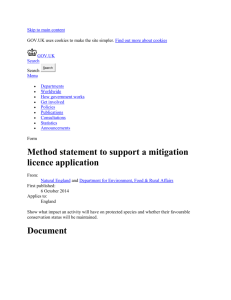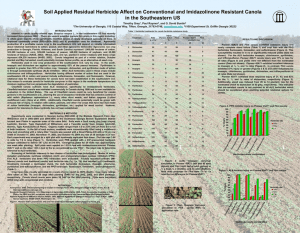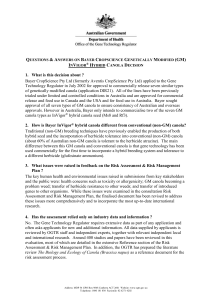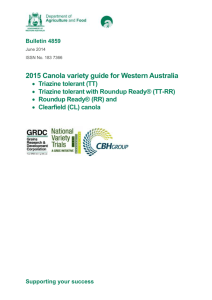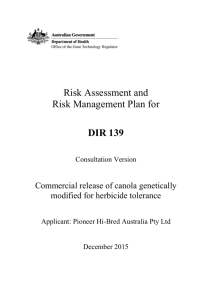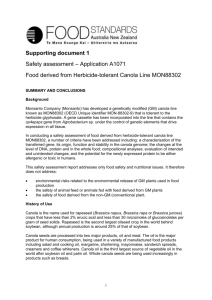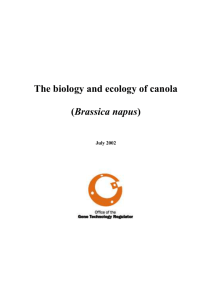Risk Assessment and
advertisement
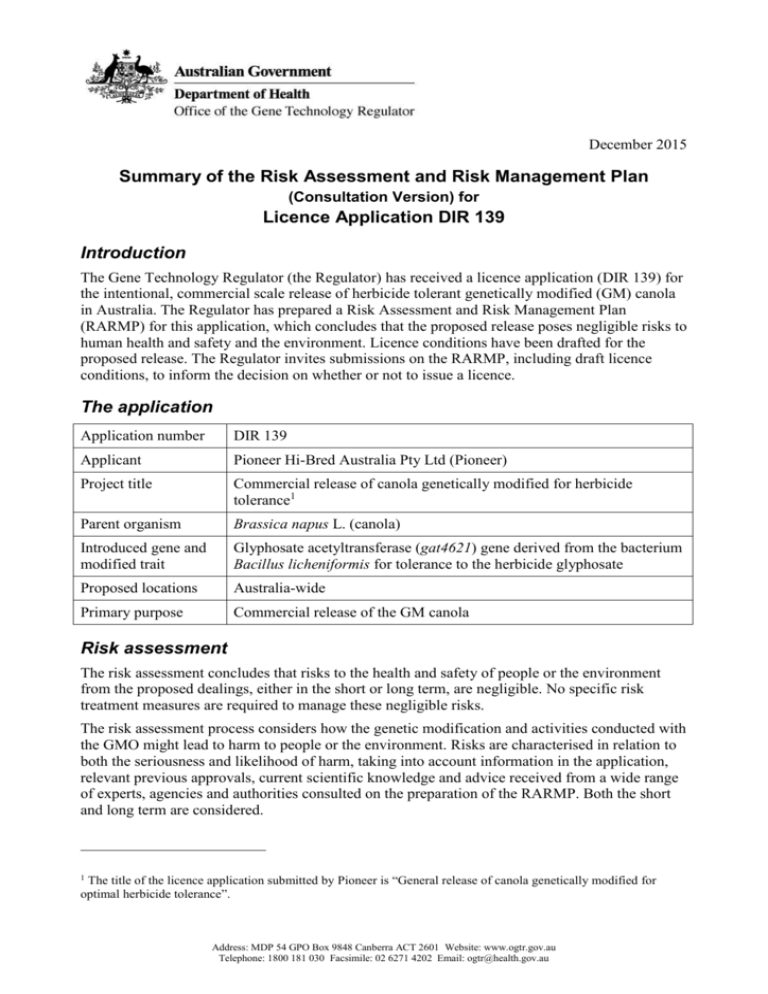
December 2015 Summary of the Risk Assessment and Risk Management Plan (Consultation Version) for Licence Application DIR 139 Introduction The Gene Technology Regulator (the Regulator) has received a licence application (DIR 139) for the intentional, commercial scale release of herbicide tolerant genetically modified (GM) canola in Australia. The Regulator has prepared a Risk Assessment and Risk Management Plan (RARMP) for this application, which concludes that the proposed release poses negligible risks to human health and safety and the environment. Licence conditions have been drafted for the proposed release. The Regulator invites submissions on the RARMP, including draft licence conditions, to inform the decision on whether or not to issue a licence. The application Application number DIR 139 Applicant Pioneer Hi-Bred Australia Pty Ltd (Pioneer) Project title Commercial release of canola genetically modified for herbicide tolerance1 Parent organism Brassica napus L. (canola) Introduced gene and modified trait Glyphosate acetyltransferase (gat4621) gene derived from the bacterium Bacillus licheniformis for tolerance to the herbicide glyphosate Proposed locations Australia-wide Primary purpose Commercial release of the GM canola Risk assessment The risk assessment concludes that risks to the health and safety of people or the environment from the proposed dealings, either in the short or long term, are negligible. No specific risk treatment measures are required to manage these negligible risks. The risk assessment process considers how the genetic modification and activities conducted with the GMO might lead to harm to people or the environment. Risks are characterised in relation to both the seriousness and likelihood of harm, taking into account information in the application, relevant previous approvals, current scientific knowledge and advice received from a wide range of experts, agencies and authorities consulted on the preparation of the RARMP. Both the short and long term are considered. The title of the licence application submitted by Pioneer is “General release of canola genetically modified for optimal herbicide tolerance”. 1 Address: MDP 54 GPO Box 9848 Canberra ACT 2601 Website: www.ogtr.gov.au Telephone: 1800 181 030 Facsimile: 02 6271 4202 Email: ogtr@health.gov.au Office of the Gene Technology Regulator Credible pathways to potential harm that were considered included: toxic and allergenic properties of the GM canola; potential for increased weediness of the GM canola relative to unmodified plants; and vertical transfer of the introduced genetic material to other sexually compatible plants. The principal reasons for the conclusion of negligible risks are: the introduced protein is not considered toxic or allergenic to people or toxic to other desirable organisms; proteins similar to the introduced protein are widespread in the environment; the GM canola has been grown in field trials in Australia since 2012 without adverse or unexpected effects; the GM canola and its progeny can be controlled using integrated weed management; and the GM canola has limited capacity to establish in undisturbed natural habitats. In addition, food made from the GM canola has been assessed and approved by Food Standards Australia New Zealand as safe for human consumption. Risk management The risk management plan concludes that risks from the proposed dealings can be managed so as to protect people and the environment by imposing general conditions to ensure that there is ongoing oversight of the release. Risk management is used to protect the health and safety of people and to protect the environment by controlling or mitigating risk. The risk management plan evaluates and treats identified risks and considers general risk management measures. The risk management plan is given effect through licence conditions. As the level of risk is assessed as negligible, specific risk treatment is not required. However, the Regulator has drafted licence conditions regarding post-release review (PRR) to ensure that there is ongoing oversight of the release and to allow the collection of information to verify the findings of the RARMP. The draft licence, detailed in Chapter 4 of the consultation RARMP, also contains a number of general conditions relating to ongoing licence holder suitability, auditing and monitoring, and reporting requirements, which include an obligation to report any unintended effects. 2

